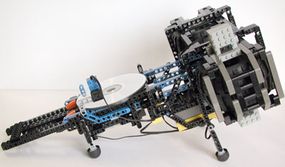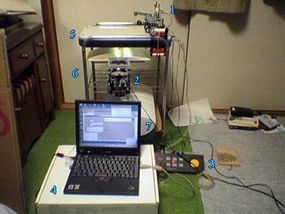More Amazing Lego Sculptures
Carol says, "It took me three months to design and construct the machine. It has several thousand parts including over 200 gears. It takes just over 100 turns of the crank for each answer to be computed which gives it a rate of one complete three digit calculation every 45 seconds or so."

Hurbain explains, "I built the CD launcher for a contest published on Lego Mindstorms Forum. I was myself astonished by the power that could be delivered by a few ABS parts and toy motors..."
Advertisement

"The model includes about 500 Lego pieces," Muranushi explains. "It took a whole weekend to build the first model, which was finished Tuesday, February 14, 2006. Lego has camera eyes, sensors and mini-computer bricks, or you can link with a personal computer to do complicated tasks. If you have a dull task, your knowledge of robotics, metal processing and electronics will help. Buying one at store can save your time if they sell what you need. But Lego is another choice. Lego models are very easy to improve. You can recycle one model to another, doing different tasks. Lego models are also "endurable" -- if split into pieces, just put it together again. With Lego you can overcome drudgery of your own, and by your building instruction on the web, a drudgery of the world. And don't forget, Lego-ing is fun! To handle Lego is to play with your ingenuity and exercise it. Sudoku also has such an effect, but Lego is not limited to 9x9 blocks; it's infinite and it helps you in real world tasks."
